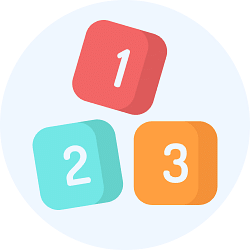Class 1 Exam > Class 1 Notes > English Grammar for Junior Classes > Worksheet: Vowels & Consonants - 2
Worksheet: Vowels & Consonants - 2 | English Grammar for Junior Classes - Class 1 PDF Download

Q1: Write "V" for vowels and "C" for consonants next to each letter.
(i) A
(ii) B
(iii) I
(iv) F
(v) U
(vi) L
(vii) O
(viii) D
(ix) E
(x) G
The document Worksheet: Vowels & Consonants - 2 | English Grammar for Junior Classes - Class 1 is a part of the Class 1 Course English Grammar for Junior Classes.
All you need of Class 1 at this link: Class 1
|
18 videos|170 docs|35 tests
|
FAQs on Worksheet: Vowels & Consonants - 2 - English Grammar for Junior Classes - Class 1
| 1. What is the difference between vowels and consonants? |  |
Ans. Vowels and consonants are two different types of sounds in language. Vowels are sounds produced with an open vocal tract, allowing air to flow freely. They are the letters A, E, I, O, U, and sometimes Y. Consonants, on the other hand, are sounds produced with a partial or complete obstruction of the vocal tract. They include all the other letters of the alphabet.
| 2. How many vowels are there in the English language? |  |
Ans. In the English language, there are five main vowels: A, E, I, O, and U. However, the letter Y can also function as a vowel in certain cases. So, in total, there are six vowels in English.
| 3. Can a word have all consonants and no vowels? |  |
Ans. No, a word cannot have all consonants and no vowels in English. Every English word must have at least one vowel sound. However, it is possible for a word to have a single vowel accompanied by several consonants.
| 4. How can I determine if a letter is a vowel or a consonant? |  |
Ans. To determine if a letter is a vowel or a consonant, you need to consider its sound rather than its appearance. Vowels are sounds produced with an open vocal tract, while consonants are sounds produced with an obstruction of the vocal tract. For example, the letter "A" is a vowel because it represents the sound /æ/, whereas the letter "B" is a consonant because it represents the sound /b/.
| 5. Are there any languages without vowels? |  |
Ans. No, there are no languages without vowels. Vowels are essential components of any spoken language as they provide the basis for syllables and vocalic sounds. While some languages may have fewer vowels compared to others, all languages have at least a few vowel sounds.

|
Explore Courses for Class 1 exam
|

|
Signup for Free!
Signup to see your scores go up within 7 days! Learn & Practice with 1000+ FREE Notes, Videos & Tests.
Related Searches

















